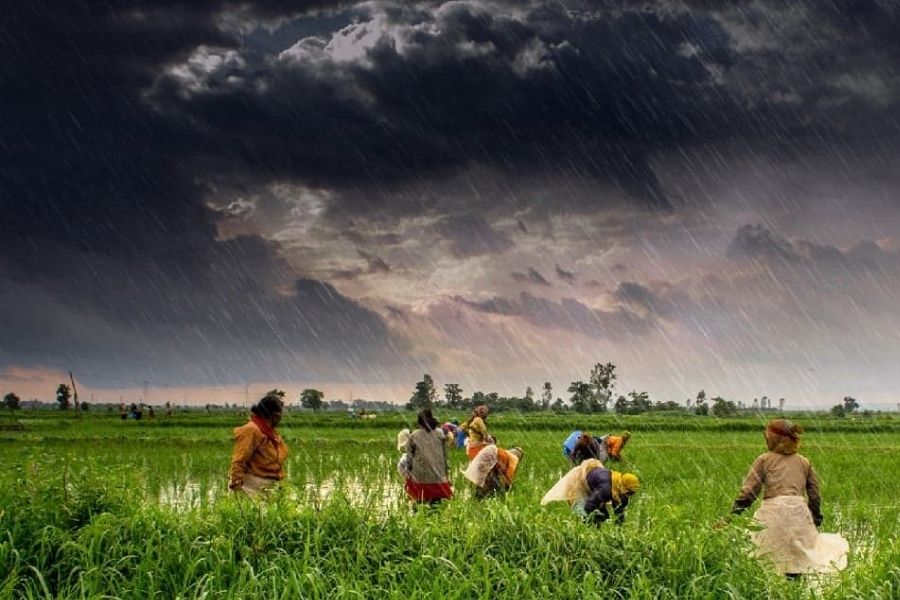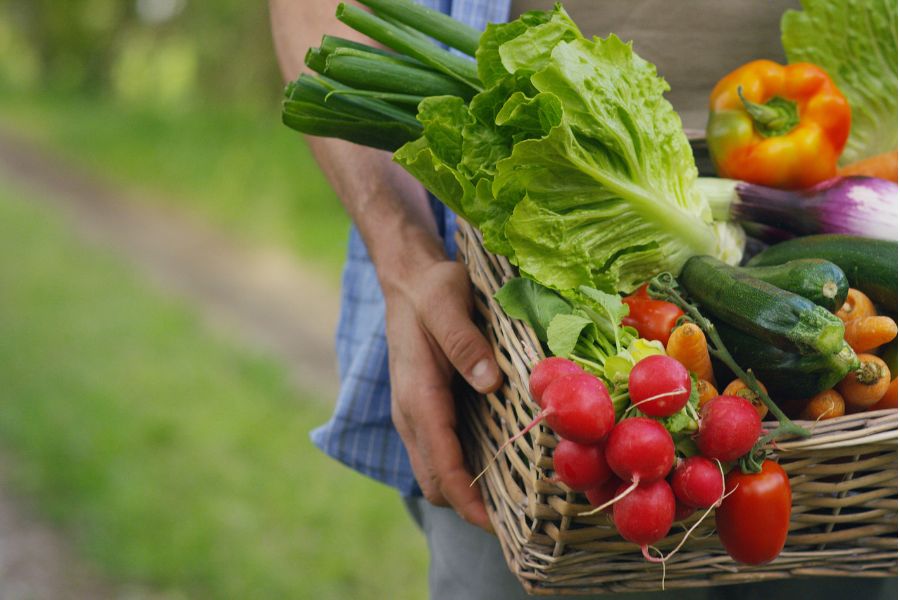Agriculture reform in India: A sum of ‘739’ parts approach
Agri ESG entrepreneur Chalasani Bhaskar believes that the agricultural ordinances introduced by the government are a welcome step in unshackling farmers from legacy issues. But he asserts that state intervention for creating unique landscape agri infrastructure solutions across 739 districts is critical to truly reform Indian agriculture.

The three farm bills recently introduced by the government are undisputedly the right prescriptions for the 3 diseases plaguing the ecosystem for small farmers & will de-bond them from systemic slavery. In principle, farmers now are not constrained by APMC and can access a wider market for their produce as “One India”. They will also have the freedom to store their produce and get into contracts with anyone of their choosing for sustainable and long term returns for their risk and hard work. Besides this, the traditional options of MSP and APMC mandis are available for them to avail if they choose to.
Having said that, we must realise that agriculture is a state subject. If the state governments do not enact conducive laws at the state level, the actions of the central government will be of no use to the farmers. So the state governments need to understand the needs of each of the districts, work out their singularities in terms of farm produce and potential, and create the infrastructure required for supporting them. The major areas that states have to work on to ensure that the bills meet their intended objectives are as below:
- Build landscape agri infra in every district for farm, supply chain and last mile D2C
- Demand-side interventions for efficiency with KPIs
- Crop planning & demand-supply management integrating the 739 districts – One India.
- Skilling, training & farm services.
- Farm side interventions for efficiency & productivity
- Living wages, regeneration & ESG compliance
In this article, I will elaborate more on the agri infrastructure aspect. State governments have to ensure the required investments in landscape infrastructure in order to build capacities for each district.
A landscape is a socio-ecological system that consists of natural and/or human-modified ecosystems, and which is influenced by distinct ecological, historical, economic and socio cultural processes and activities. Achieving landscape ambitions requires different mixes of asset, enabling and digital investments depending on a landscape‘s circumstances.
Either the state governments can invest to build the infrastructure themselves, or nurture P-P-P policy based projects. I have been talking to lot of development finance institutions (DFIs), who are interested to invest in India; but no state government has an enabling department nor understanding for designing new models for PPP as needed by the market place.

Image credit: The Better India
I propose that state governments leverage the 6D approach – Discovery, Diagnosis, Design, Development, Deployment & Delivery. First we need to ‘discover’ a district and then ‘diagnose’ its exact agri potential and challenges. Then we need to ‘design’ the required infrastructure because every district is unique. At the next stage, you enter into a PPP or approach the private sector – giving them the freedom to develop it.
Finally, it is a question of ‘deployment’ and ‘delivery’. You also need to put regulatory mechanisms so that the private sector does not take the farmers for a ride. What our people do is that they don’t do discovery or diagnosis and implement one design for the entire country. So the desired results are not achieved. A nation with 739 diverse landscapes cannot have one prescription.
Small farmer – Farmer Producer Organisation (FPO) – Producer Organisation Promoting Institution (POPI) model in landscape is the only bankable and viable proven solution. “Integrated landscape agri-project financing” should be mandated as a Priority Sector Lending (PSL) mandate with approach criteria for all 6D’s mandated at RBI, banks, central and state government levels.
Framework for landscape infrastructure
This supporting infrastructure must be developed with two core objectives. The first is to ensure that farm produce is made at the highest scale of efficiency and productivity. The second is that whatever is produced is channelized to the required market, because not everything can be consumed within the district/state.
A thorough analysis of 739 districts needs to be done to understand their unique agro-climatic conditions. Subsequently, the crops should be mapped with districts where there are maximum synergies. If we map well, we will produce more and at lower costs.
This kind of a framework was not put into place, because things were happening in an arbitrary and opaque manner under the APMC system milked by traders. Now the infrastructure needs to be properly spread out and interconnected across 739 districts of the country and that requires coordination. Unfortunately today, none of the district collectors talk to each other to enable that, without which, the right hand does not know what the left hand is doing. Consequently, the farmer always loses.
This is the reason why a landscape approach is required, at least within the state, before the nation is connected as one landscape. For example, I am talking to faculty & students at the agricultural university in Kashmir. The state has a conducive natural ecosystem for several agri-products that are needed by rest of the country.
Instead of sourcing from Kashmir, we are importing, which is illogical. If we talk about soyabean, mustard or cumin seeds, some states in the North have ten times the productivity of states in the south. Similarly, every state has strengths in specific product categories, which can enable them to produce the best quality products at the cheapest possible prices.
If a highly coordinated distribution framework is enabled between 1.3 billion people @ 739 districts, food will be available, affordable, and accessible. For example, Himachal Pradesh grows surplus apples, which can be distributed to other states. On the other hand, a state like Andhra Pradesh could provide mangoes for Himachal Pradesh. But due to lack of coordination, trucks moving from HP to AP and vice versa may often go back empty. This is where we are wasting resources.
Andhra Pradesh is one of the largest producers of bananas, but these bananas are not leaving the state and farmers are in despair. Now the Government of India is giving a subsidy for perishable products. So it is cheaper to put a plane load of bananas and take them to Delhi, rather than sending it by truck, because there is no network to understand the demand-supply requirement.
In countries with well advanced and mapped out logistics networks, the coordination is impeccable and losses are minimized. Without this level of coordination, affordability, accessibility, and availability will always be a problem. Middlemen will then play the arbiter game, based on milking the necessity, and in the process, farmers will be at a loss. The three agricultural ordinances have de-bonded the constraints to be one nation, so everybody is free to do business everywhere in the nation as facilitated in our Constitution. Now it is the states’ role to come together, as we are one country at the end of the day. In Europe, there are so many countries, but work so seamlessly with each other. We are one nation, but we seriously lack this approach.
If all the collectors of 739 districts talk to each other, the problem is resolved. I was talking to a collector, who is not in any position to talk to collectors in other states apart from his district for balancing the trade. But if farmers in the district have problems, they go to the collector, which implies a serious gap.
The result is that we are importing necessities like apples from Washington or China, because Himachal or Kashmir apples are not able to reach all over the country due to logistics issues.
This is what I said in one of the webinars – all we need is 739 leaders for handling each of our districts for agriculture and food landscape development and integration, and then we can solve the core problems across the farm production and food supply chain within 3 years. With these simple interventions, we can support and strengthen our farming ecosystem, minimize supply-demand gaps, keep agricultural prices stable and also achieve an exportable surplus.
One nation @ 739 is the solution for agriculture and food accessibility, availability & affordability. We need to reimagine the district as a primary landscape, state as a landscape of districts and nation as landscape of states, if we are serious enough to enable solutions.
Chalasani Satya Bhaskar is a serial social entrepreneur and an expert in agri-strategy, finance and risk modeling for revival, restructuring and turnaround of stressed assets and NPAs (Non Performing Assets) in India. Mr. Bhaskar graduated with an engineering degree from Wayne State University, USA in 1989. He journeyed from working at Ford in USA, to entrepreneurship in paper, bio-chemicals, agro projects, investments into ARC (Asset reconstruction company), and strategic, financial and investment modeling for stressed non performing assets.
Mr. Bhaskar is passionate with insights to discover, diagnose, design, develop, deploy and deliver new generation landscape ESG centric agri – food, feed, fiber & fuel projects encompassing the covenants of One health – One planet – One people thesis. He is Founder & Chairman of Dhakshhin Agropolis Ltd, a sum of parts landscape ESG agri project designed and being developed as a first of its kind model in Andhra Pradesh. He plans to replicate it across the 739 district’s of India to touch the life’s of every farmer and farm workers for enabling risk hedged aspirational, dignified and living incomes and to facilitate India’s and the world’s food security needs through Vocal for Local for Global. The views expressed are his own, as discussed in an interaction with Virat Bahri, Editor, India Business & Trade.













Leave a comment